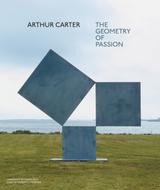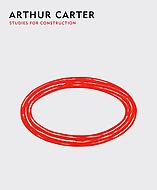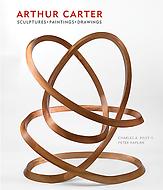Arthur Carter, who has spent much of his life in the worlds of finance and journalism, is an artist who has created a range of geometric abstractions and whose Orthogonal series will certainly have an important place in the history of sculpture. "Only squares and circles, lines and ellipses," he says, "can elegantly explain and simplify the complex meaning of life." In this comprehensive volume on his work, journalist Frank Rich contributes a biographical foreword and critic Robert C. Morgan describes Carter's achievements as an artist, carefully analyzing his place in the tradition of modern abstract art and the recent history of sculpture.

Arthur Carter’s metal sculpture is a form of drawing in space, and so it is not surprising that analytical, exploratory drawing is the foundation of his practice as an artist. Arthur Carter: Studies for Construction reproduces more than 200 of his drawings, which reveal the attention to interval and rhythm of the trained classical musician that he is. Carter, who has spent much of his life in the upper reaches of finance and journalism, is an artist whose sense of reality is deeply grounded in the lyrical abstractions of geometry: “Only squares and circles, lines and ellipses,” he says, “can elegantly explain and simplify the complex meaning of life.” Art historian and journalist Charles A. Riley offers a compelling portrait of Carter’s mind and hand at work.

With more than 170 sculptures, drawings, and paintings, this is the first comprehensive view of the art of Renaissance man Arthur Carter. Successful in journalism and business, and trained as a classical pianist, Carter is an accomplished artist in the modernist tradition. His abstract sculptures allude to human gestures and interactions. Though firmly grounded, they appear on the verge of flight. Though silent, they suggest song. His lyrical drawings and rigorous paintings, often studies for sculptures, are informed by a deep familiarity with the artists he admires most: Mondrian, Kandinsky, Arp, Bracque, and Picasso.
